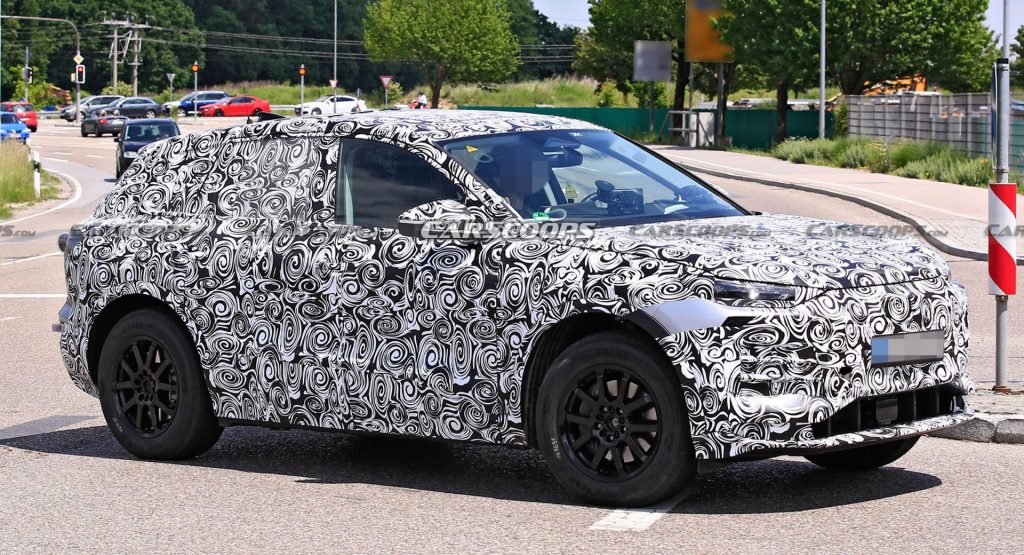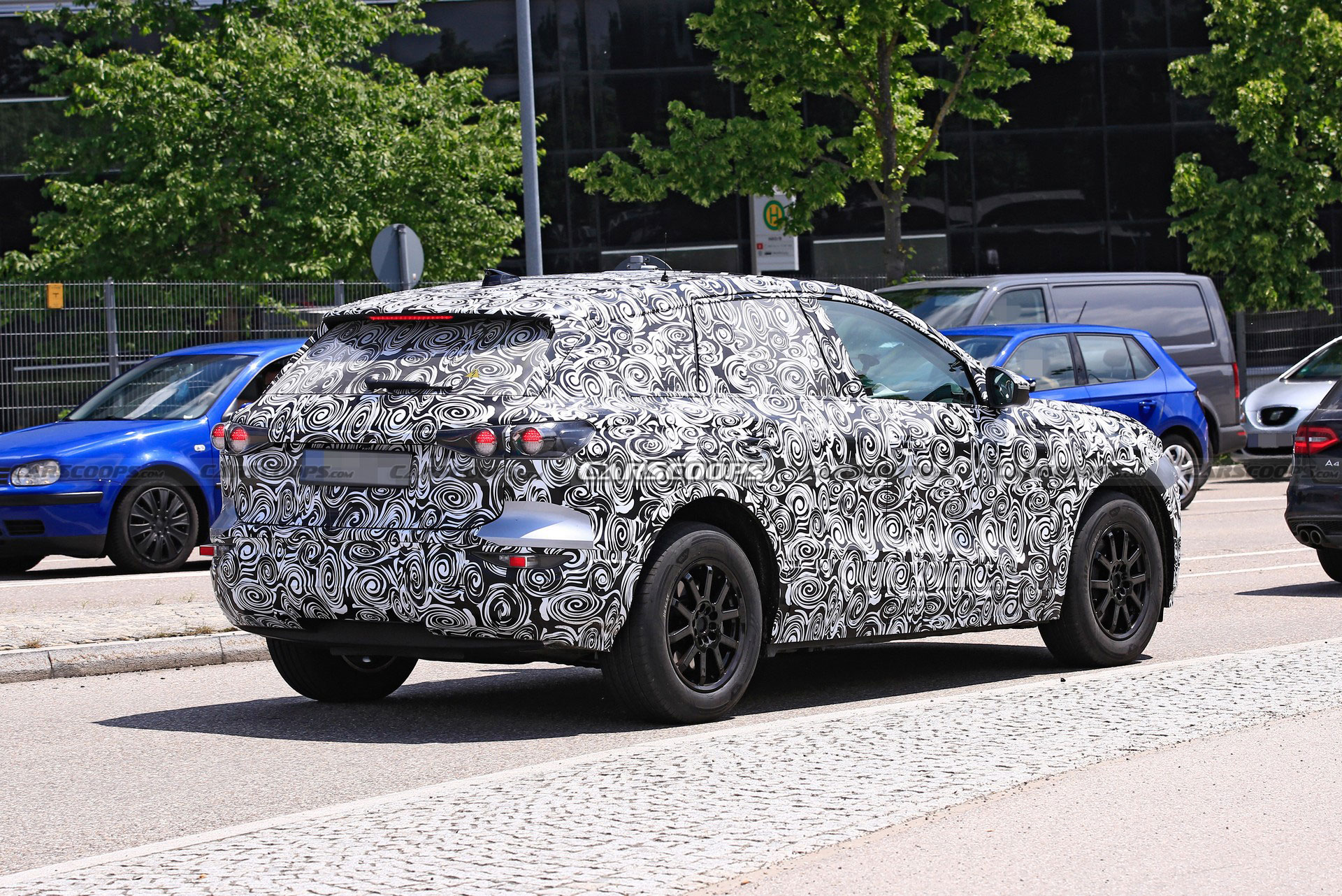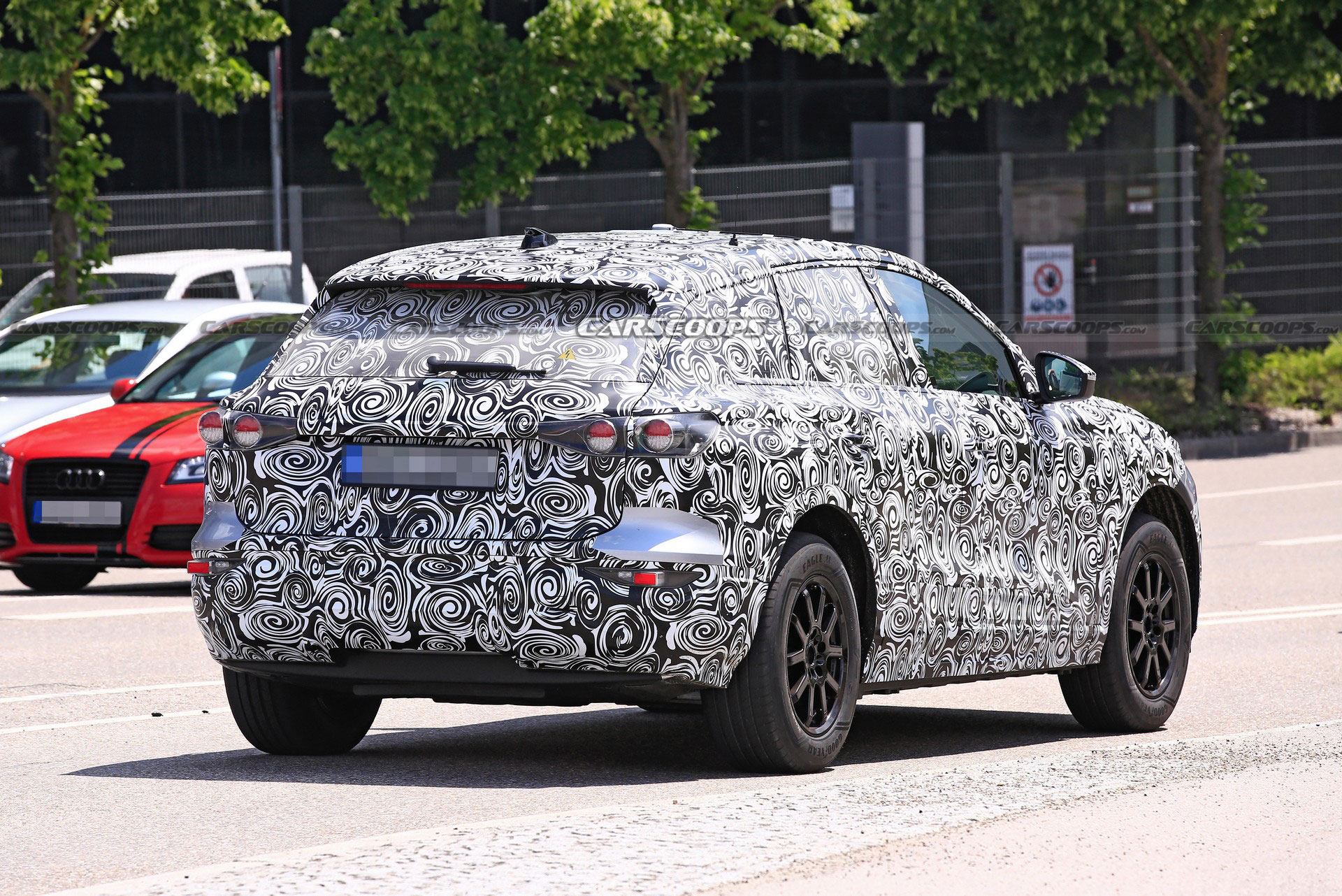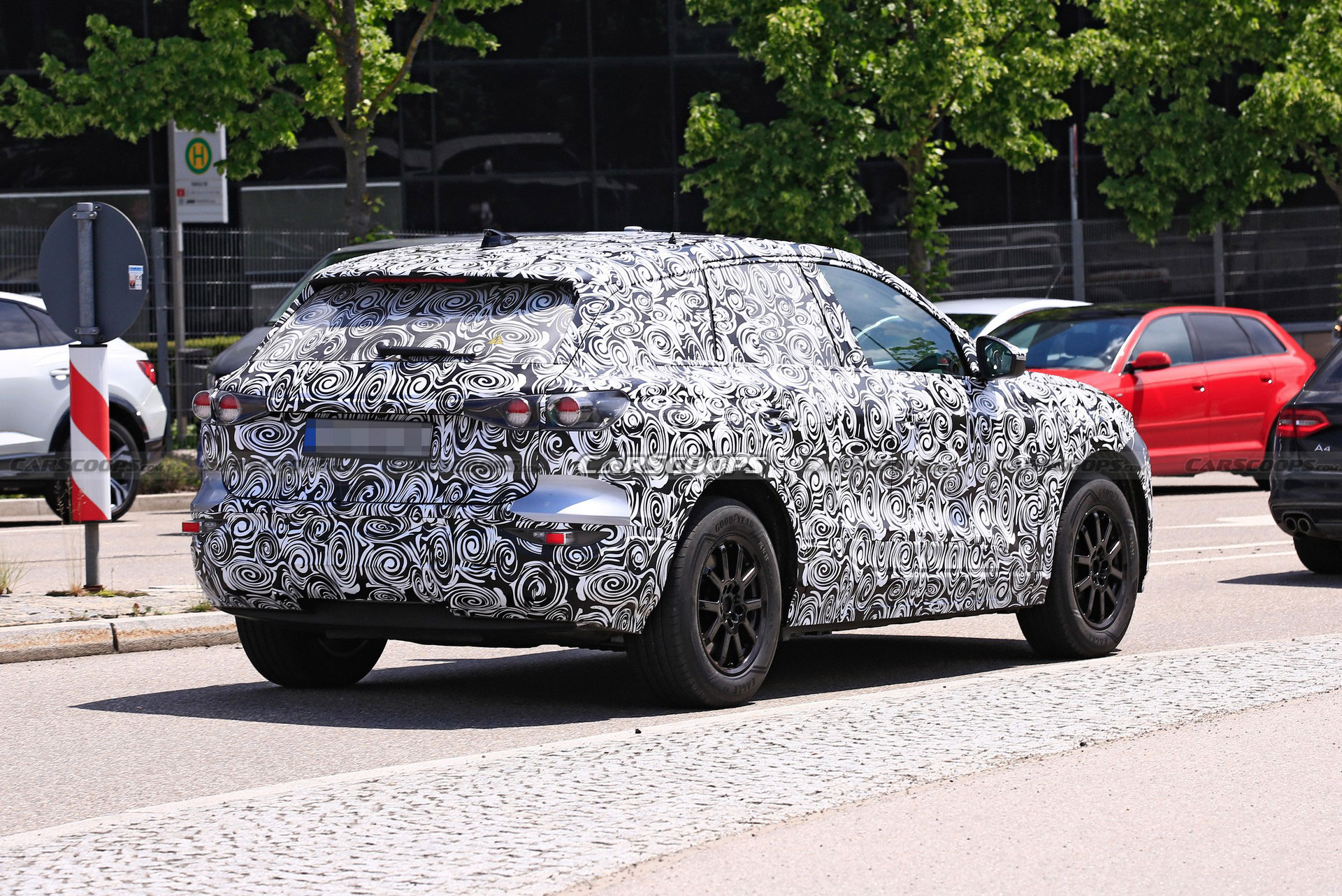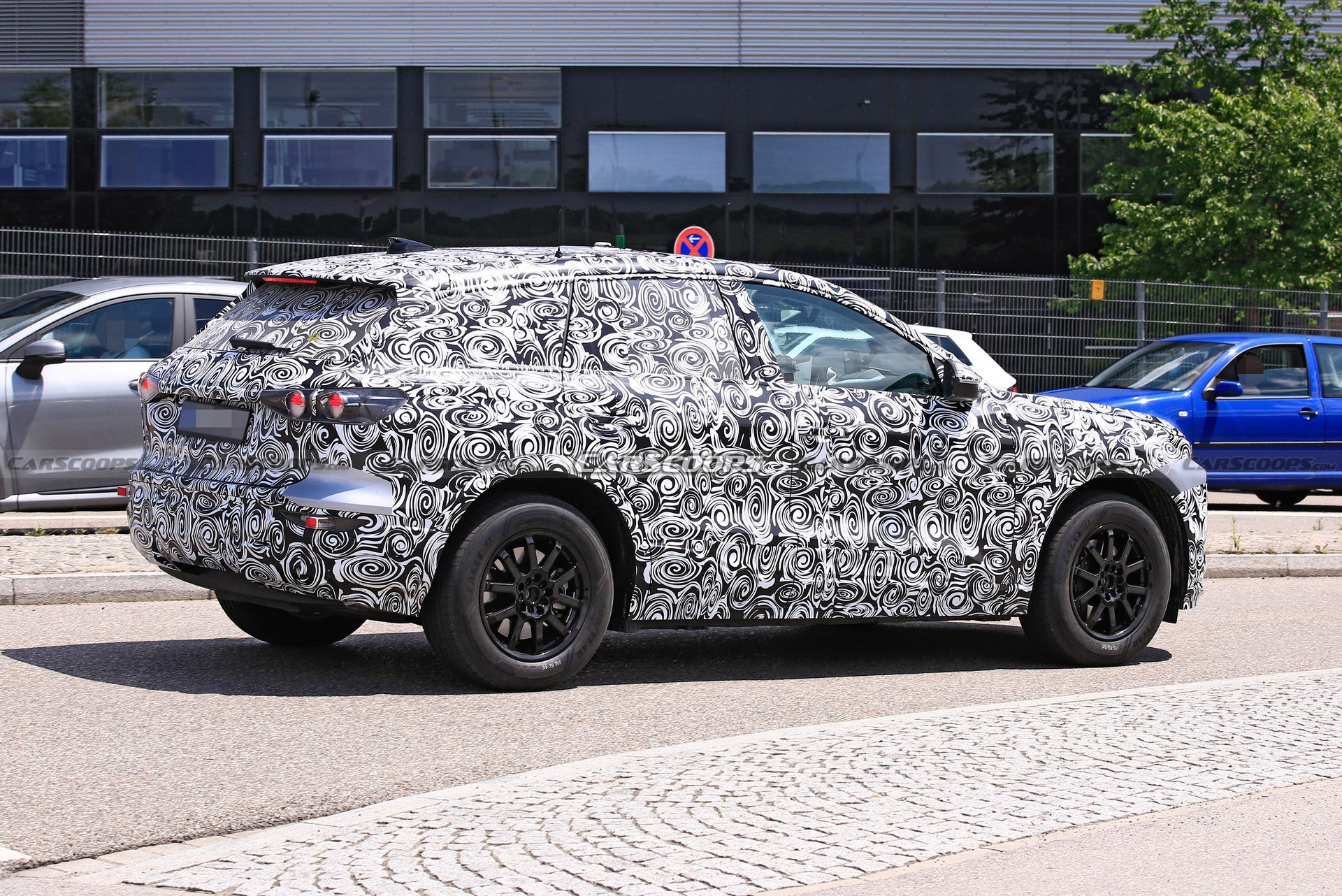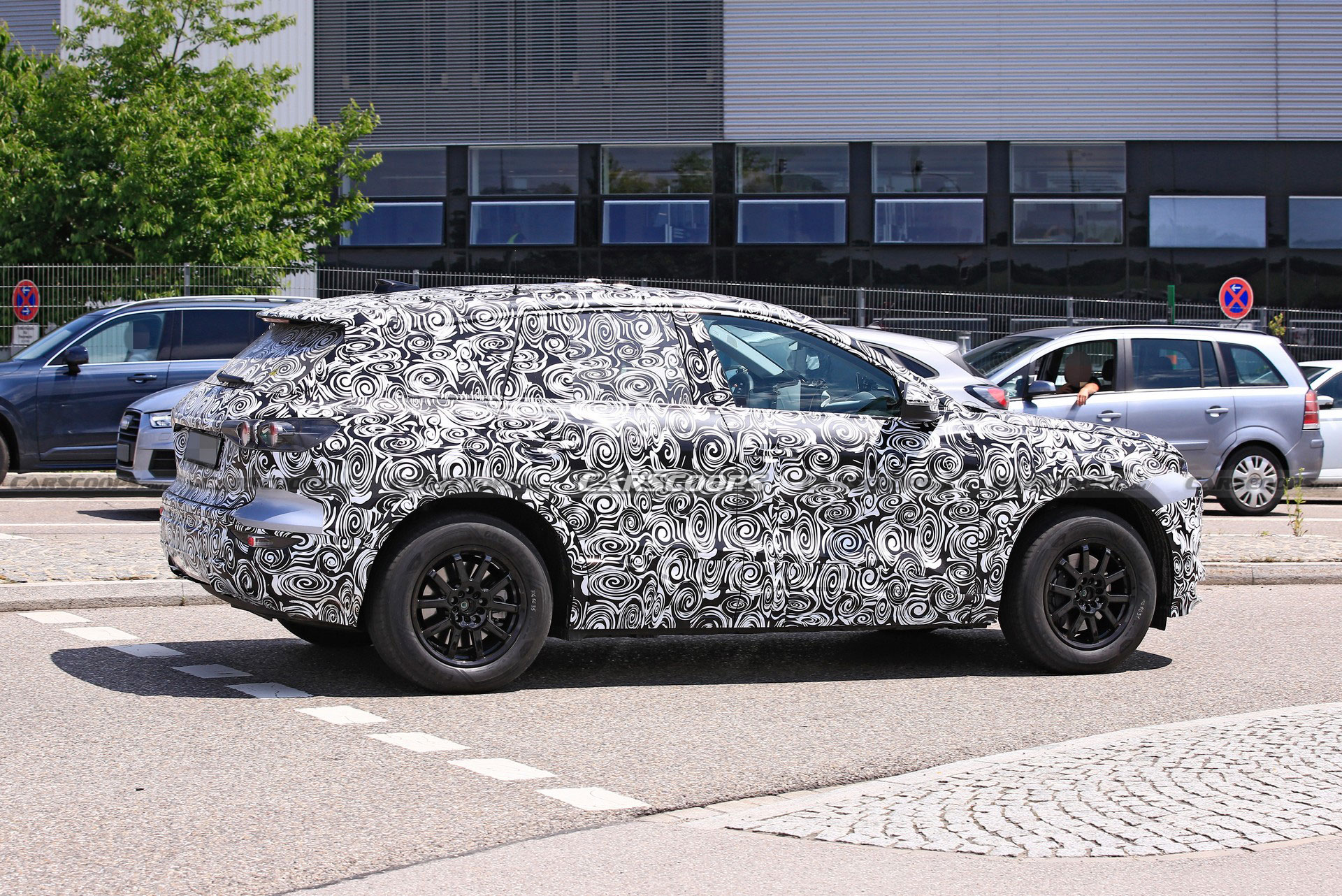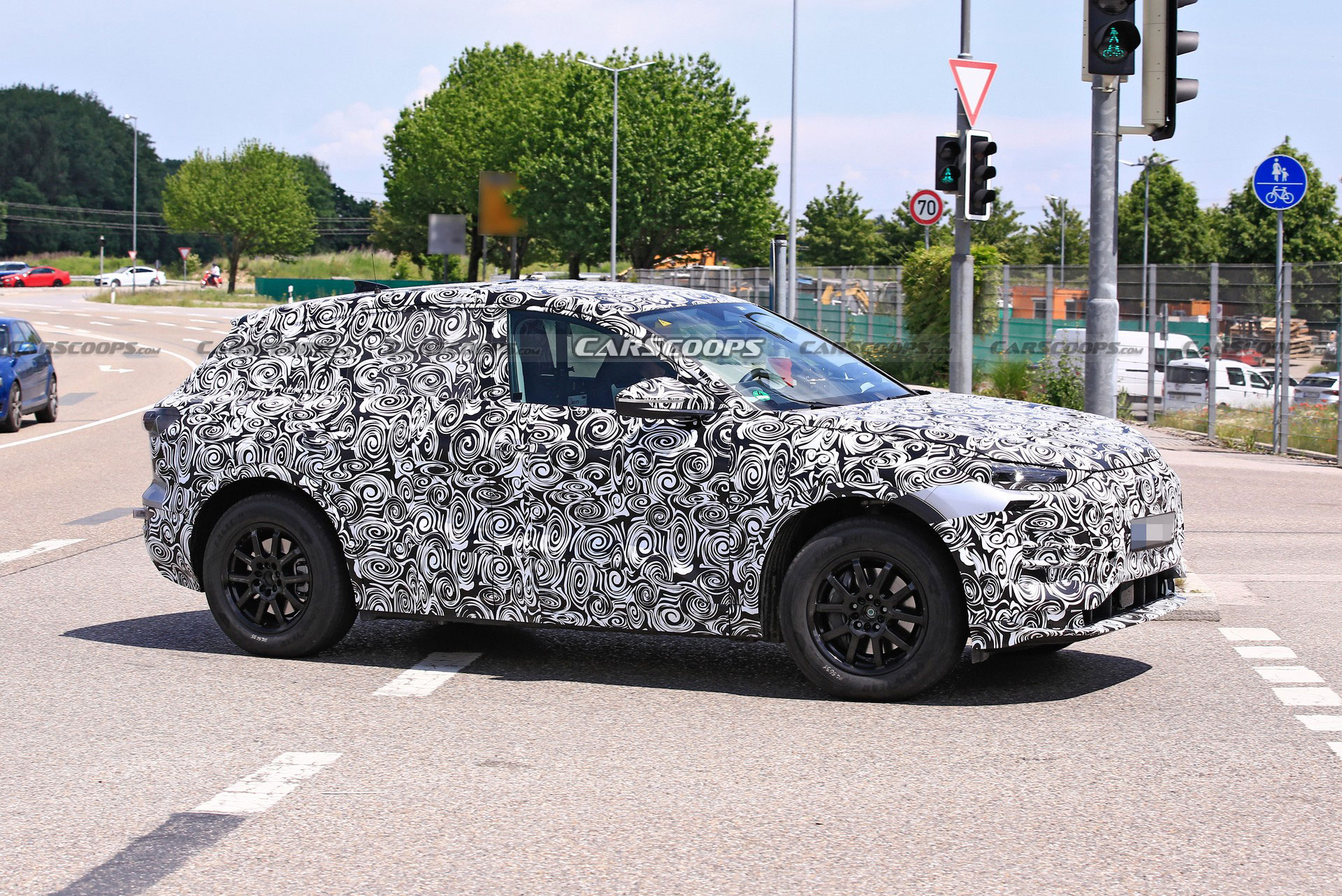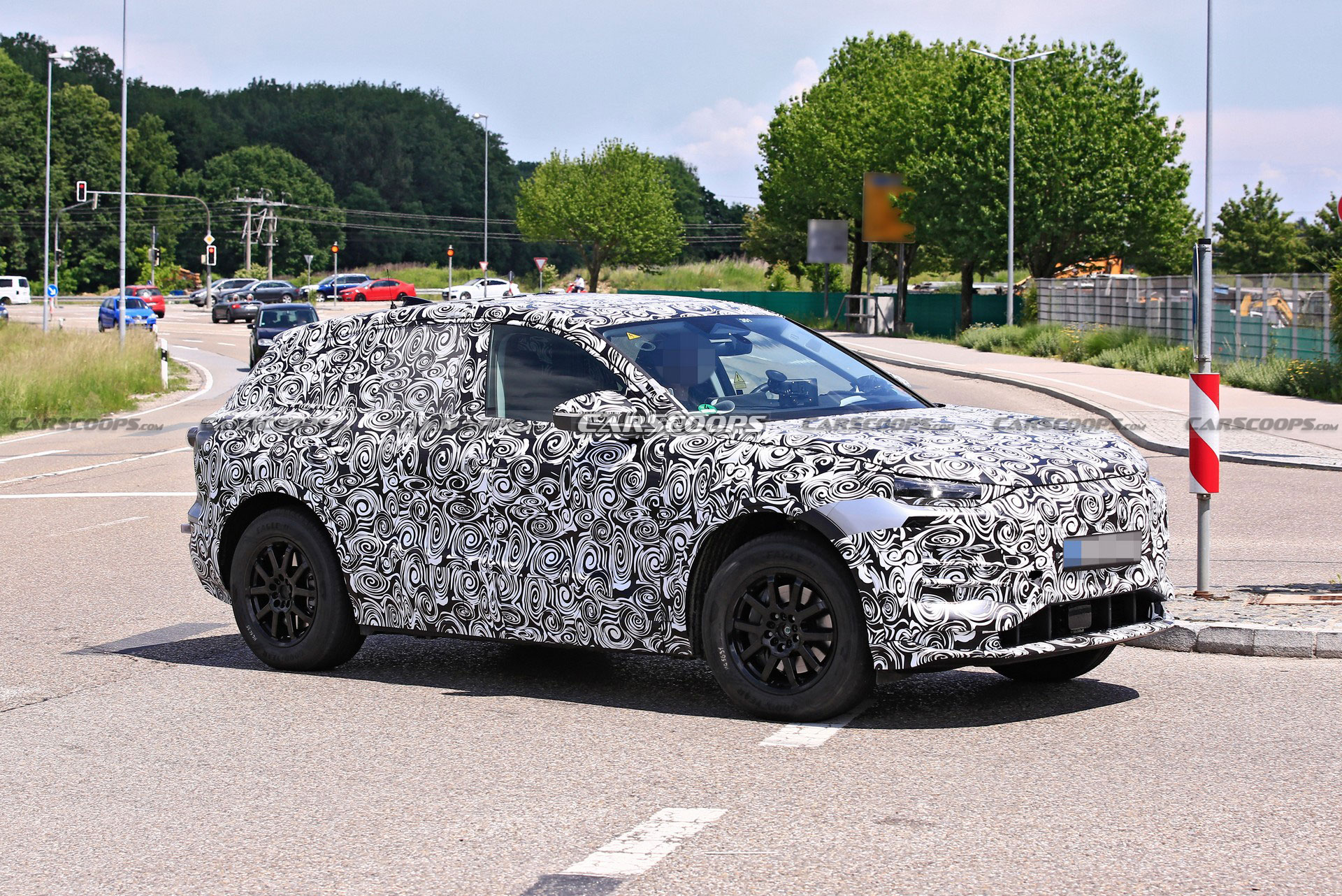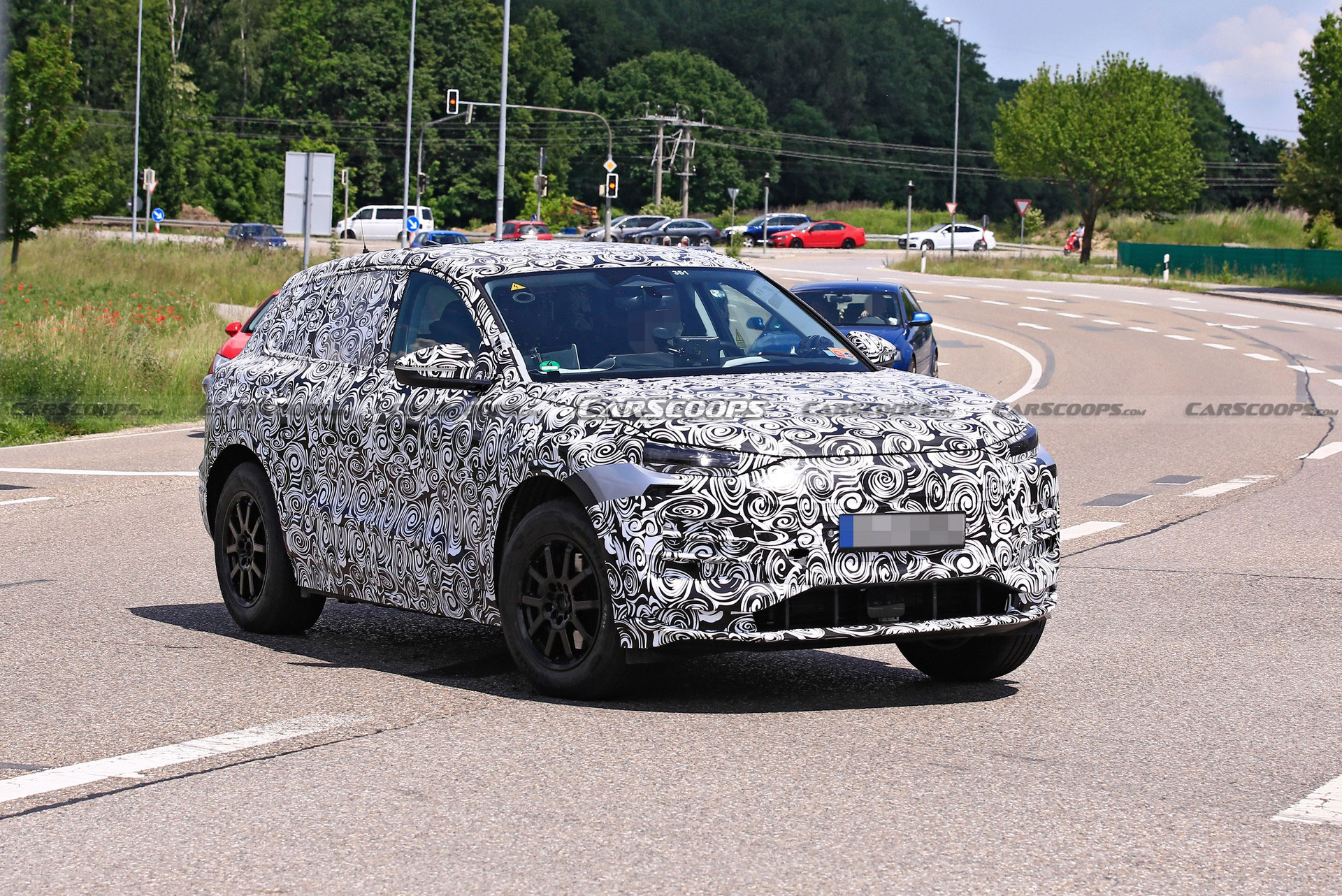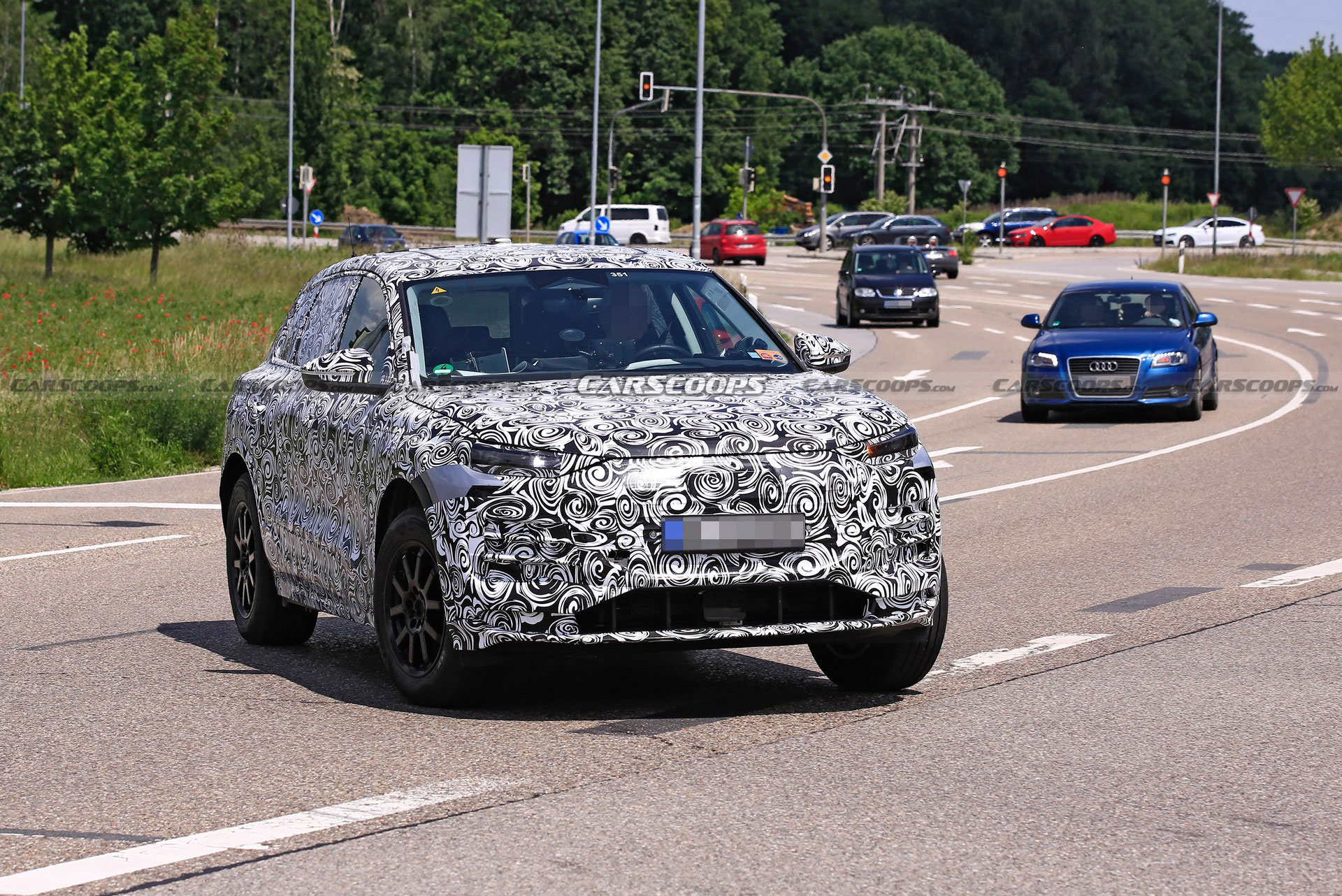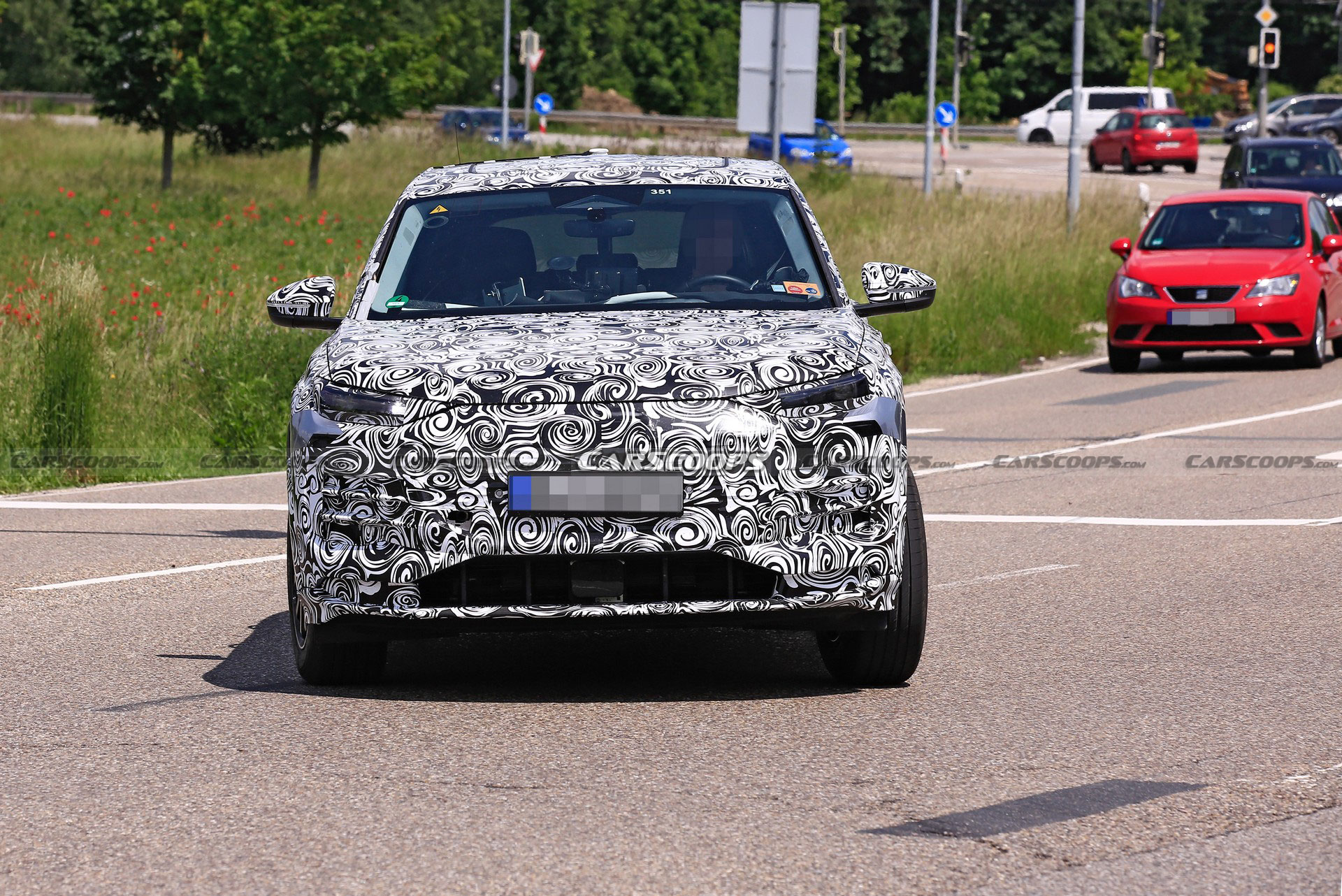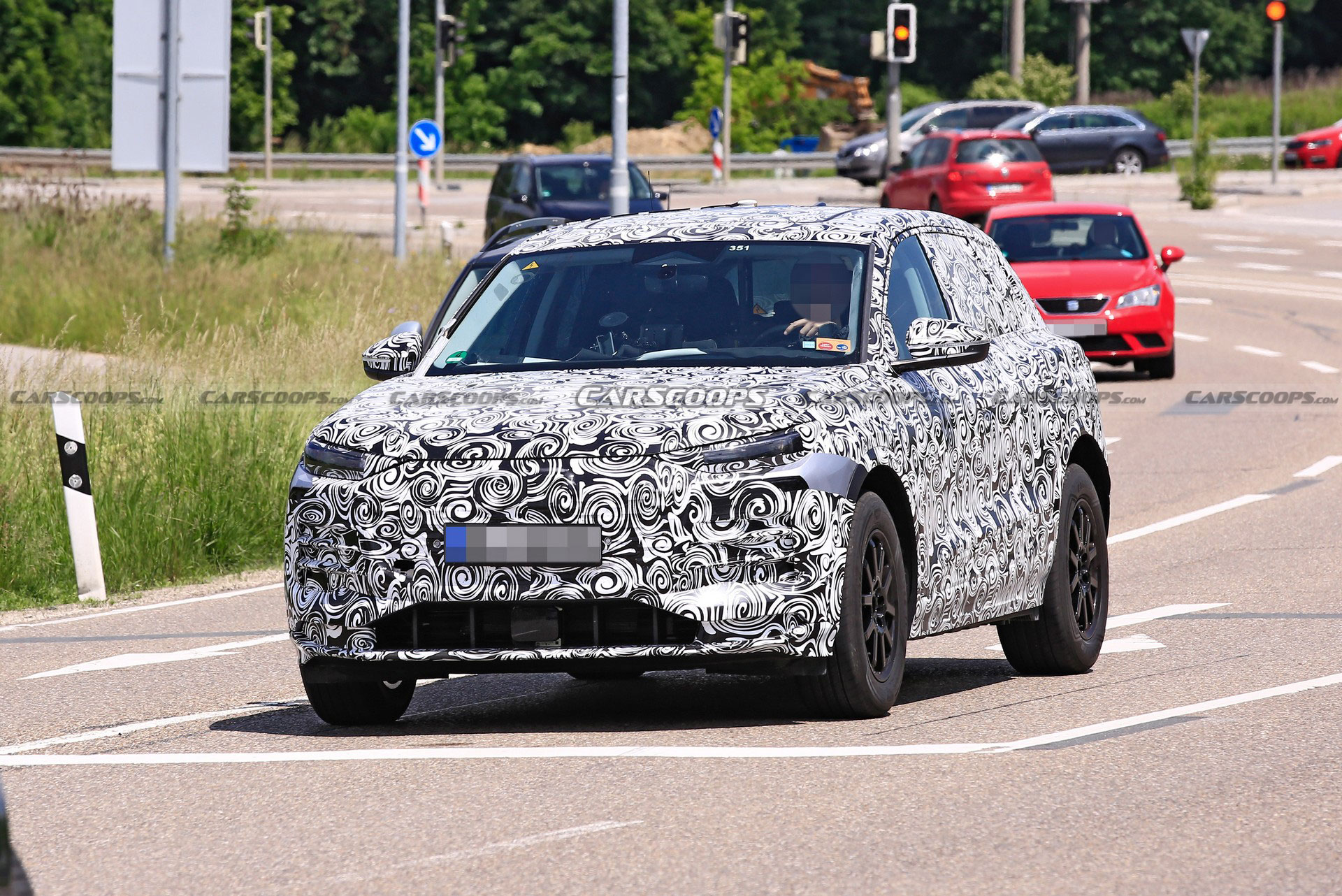Audi is going EV-only, so it comes as little surprise spy photographers have caught an electric crossover.
This time it’s the Q6 E-Tron, which will be introduced next year and built in Ingolstadt, Germany.
Audi hasn’t said much about the model, but it will slot above the Q4 E-Tron and feature a similar design. While the prototype is heavily disguised, we can see the crossover will have slender headlights and a fully enclosed grille. Further below, there’s a hexagonal intake and what appears to be air curtains.
The crossover’s profile isn’t too noteworthy, but it features curvaceous bodywork and an upward sweeping beltline. We can also see a rakish windscreen that flows into a sloping roof.
Also Read: New Audi Q6 e-tron Will Be Your More Affordable Alternative To Porsche’s Electric Macan
The curvy styling continues out back as the model has a rounded bumper and liftgate. We can also see an angular rear window and slender taillights that appear to be connected by a thin strip.
Spy photographers haven’t gotten a good look inside, but the model may take a few cues from the Q4 E-Tron. If that’s the case, the Q6 E-Tron could have a 10.25-inch digital instrument cluster and a 10.1- or 11.6-inch infotainment system.
The model is being twinned with the next-generation Porsche Macan and both will ride on the jointly developed PPE architecture. Audi has previously said the platform is “generally similar” to the MEB architecture as there will be rear- and all-wheel drive variants. However, the PPE platform will be more advanced and have an 800 volt electrical system as well as a charging capacity of up to 350 kW. Audi has also hinted PPE vehicles could have an air suspension, all-wheel steering and torque vectoring.
Performance specifications are the biggest mystery, but the PPE-based A6 e-tron concept could offer some clues. It had a roughly 100 kWh battery pack as well as a dual motor powertrain that produced a combined output of 469 hp (350 kW / 476 PS) and 590 lb-ft (800 Nm) of torque. However, Audi has suggested we can expect a variety of variants with 0-62 mph (0-100 km/h) times ranging from less than seven seconds to “well under four seconds.”




